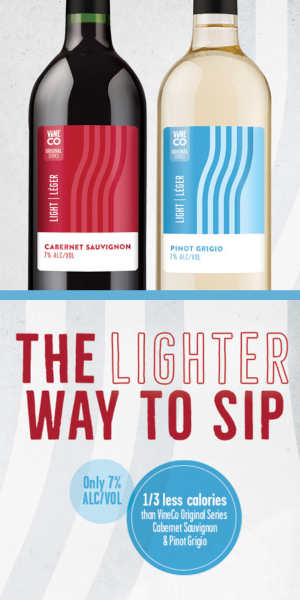Before I launch into my information about gum arabic and related products, do take a minute to think that gum arabic may not give you the result you’re looking for. Gum arabic can smooth out the perception of tannins in some wines, but I’ve found that sometimes it can make the problem seem worse. If gum arabic doesn’t solve your problem, you may want to consider protein fining, which will remove tannins, not just mask them. Proteins have been used in winemaking since time immemorial. Egg whites, milk, animal gelatin, and yes, even the infamous bull’s blood, have been used in winemaking for centuries (though no one uses blood anymore as far as I know). The protein molecules adhere to excess tannin in the wines and then fall to the bottom of the container as sediment, essentially sweeping the tannins from the wine. The wine is then racked off the sediment and hey presto, the resulting wine is clarified and carries less of a tannin burden. When done right, the wine is softer, rounder and more approachable. I find that gum arabic, indeed, can smooth out red wines, but as you’ll see below, it’s sometimes not the best, or only, solution.
I was first introduced to the range of gum arabic products available for winemaking at Bonny Doon Vineyard when “rebel winemaker” (he’s a bit of an iconoclast) Randall Grahm brought it back from one of his trips to France, around 1999 or so. We did a lot of experimentation work with it at the winery (I was the Enologist, and later the Assistant Winemaker) and sometimes we ended up adding it to reds, whites, or pink wines. The general effect it gave was a slight softening of tannins, an increase in apparent viscosity, and a sense of sweetness without any residual sugar.
Gum arabic was first introduced in the wine industry in Europe about 75–80 years ago to improve tartrate stability, back when traditional cold stability was difficult to achieve (not to mention expensive) with chilling the wine to near freezing temperatures. Gum arabic, also known as gum acacia or Arabinol (the brand you mention is Maxigum, a product sold by Enartis USA), is a natural carbohydrate polymer that comes from the sap of two species of African Acacia trees: A. senegal and A. seyal. It’s safe and natural and has been used for centuries in foods, jams, candies, drinks, and cough medicines. Gum arabic is a legal wine additive that a home winemaker can also use to enhance mouthfeel, to smooth out tannins, and to lengthen the finish of wines.
Gum arabic is a legal wine additive that a home winemaker can also use to enhance mouthfeel, to smooth out tannins and to lengthen the finish of wines.
Gum arabic products are usually sold in liquid form and, in addition to preventing tartrate instability, can lessen the perception of astringent and bitter tannins. Because Arabinol contains large polysaccharide molecules, it is quite thick and is often perceived as “sweet” on the palate even though it’s technically not a fermentable sugar. As you allude to, it’s very important to mix it in well to your containers or carboys because it is so viscous. It can be added to wine right before bottling but I prefer to add it about 1–2 weeks before bottling, after the final blend is assembled and any other major treatments have been done.
Gum arabic isn’t always the answer for every wine. In some cases, gum arabic products might improve mouthfeel, in some cases not. I find it is not a uniform quality-enhancer and, unlike other adjustments (tartaric acid, for instance), is not linear, i.e. adding more doesn’t always get you “more” effect. It’s important to find the sweet spot with each wine individually.
The dosage that Enartis recommends for Maxigum is 0.2–1.0 mL/L (200–1000 uL/L), though I tend to find the “sweet spot” lies between 0.5–0.75 mL/L (500–750 uL/L). To do bench trials with small samples of wine and such small doses, you’ll probably want to invest in a set of Eppendorf pipettes in the 0-100 uL and 100-1,000 uL range. They can cost hundreds of dollars so may seem like a huge investment, but if you are a serious small-scale winemaker, Eppendorfs, along with a scale that can measure tenths of a gram will serve you well over many years of winemaking.
If I were to do Maxigum trials, here is what my bench trial would look like. First I’d measure out 50 mL aliquots of my wine to treat in individual, identical wine glasses. As you don’t have a lot of wine to waste on trials, using 50 mL samples is probably ideal for most micro-vintners. Next I would use my Eppendorf pipette to measure out the Maxigum in my 0.5 mL/L–0.75 mL/L (500–750 uL/L) dosage range. To walk you and fellow readers through a conversion of units (skip if you’ve done this a million times before): 500 uL/L = 25 uL/50 mL; and 750 uL/L= ~ 37 ul/50 ml. So let’s say you try three glasses at first: Control (0 uL/50 mL), the 0.50 mL/L range (25 uL/50 mL), and the 0.75 mL/L range (37 uL/50 mL).
Measure in the Maxigum directly into your two glasses with your micropipette, swirl all three, seal all three glasses (we use a watch glass, which is a small concave glass disk that fits over the mouth of the wine glass), let rest and react for about 15 minutes and then uncover the glasses, taste, and evaluate all three samples. Gum arabic doesn’t take very long to interact with that small dose of wine and can be assessed almost immediately. The color will be unchanged but smell for any aromatic differences. Then sip, swish in your mouth and spit (or swallow, if you don’t have anything else you’re doing that day) and see if there were any effects. Were they positive or negative? How about in the attack, mouthfeel, taste, astringency or length of finish? Did either addition get you a more positive result than the control? If so, which did you like best? Did you like any of them? Having more than one taster can be helpful . . . most of the time.
The above approach is one that I recommend with just about any fining agent or additive. Start with the manufacturer’s recommended dosage range, temper it with your own experience, then calculate out what kind of uL (microliter) or gram range you’ll need in order to evaluate a 50 mL bench trial. Some people like to use 100 mLs because it’s easier to calculate, but I find that if you’re doing a lot of trials, it’ll use up a lot of your very valuable wine.
If Maxigum doesn’t give you the result you’re looking for, try protein fining. The easiest, cheapest thing for home winemakers to use would be egg whites. I have a full description of egg white fining in The Winemaker’s Answer Book, and winemakermag.com can be searched for past articles which have covered the topic. Egg whites tend to be among the mildest of protein finings, making them a good place to start . . . and available at the supermarket! Enartis, and other industry suppliers like Scott Labs, Laffort, and AEB (hey, I must be an equal opportunity Wine Wizard here) all sell protein fining agents in liquid and powder form. Laffort, interestingly, has a new vegetable-sourced (peas!) protein available if you’re worried about an egg allergy and don’t want to use any animal-based fining agents. It might surprise you to know that, for all our talk about it, most winemakers don’t use protein-based fining agents on their wines. It’s expensive, fiddly to do, and picking the grapes at optimum ripeness, proper vinification and time are often all the “fining agents” we need.
Egg whites tend to be among the mildest of protein finings,
making them a good place to start . .
If you decide to take the fining agent route, you’ll have to do bench trials here as well in order to find out which additive gives you the effect you like. For protein fining trials you’re going to need to leave time for your trial to settle (at least 72 hours), so I find working with little 200–187 mL screw-top bottles allow me to conserve valuable wine but also get good settling. Most home winemaking supply stores carry small-capped containers like these. After you measure in your fining agent dose with your micropipettes (it’ll be very small, trust me!), let settle at least 24 hours, then decant off the sediment into your tasting glass. For this reason I like the little Bordeaux-shaped 187-mL bottles because they’re tall, narrow, and give decent lees compaction; much more so than a larger-diameter bottle. Since you have an aged-red wine, it’s likely you’ll only need a very little bit of a protein fining agent to achieve the result you’re seeking.




